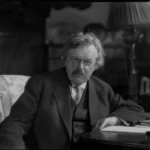A review of Marriage and Family in the Biblical World. Edited by Ken Campbell.
InterVarsity Press, 2003.
In this very informative volume six Protestant biblical scholars provide us with almost everything you’ve wanted to know about the institutions of marriage and family in biblical times. The six scholars cover all the territory, with incisive chapters on marriage and family in the Ancient Near East (ANE), in ancient Israel, in Greek society, in Roman society, in Second Temple Judaism, and in the New testament.
Taken together they provide comprehensive coverage of the issues as developed over several thousand years of biblical history. Family life and marriage patterns are expertly covered in detail, as are all the related questions: divorce, sexual ethics, adoption, parenting, abortion, celibacy, children, homosexuality, and gender roles.
Indeed, this book is an excellent source of information on all things pertaining to marriage and family in the biblical world. Given the contentious debates surrounding marriage and family today, this book will provide a good historical, social and religious framework with which to judge such discussions.
Consider the chapter on “Marriage and Family in Ancient Israel” by Daniel Block. This is an excellent example of biblical scholarship combined with social and historical analysis. Block, who has written some excellent biblical commentaries on the book of Judges and the book of Ezekiel, here provides a detailed survey of the Old Testament understanding of marriage and family. It is very-well referenced, with 321 footnotes supplementing the 70 page chapter. All aspects of family life are covered.
His discussion on patriarchy is most illuminating. Block argues that the term itself is misleading, and should be replaced by the term “patricentrism”. This is because the biblical emphasis is on the responsibilities of the husband, not just his privileges and power. Wives, children and even slaves were treated with respect, even if a hierarchy of authority was in order.
Wives especially were not second-class citizens, as some might suppose. Says Block, “Although the functional; subordination of the wife to the husband is a constant, throughout the Old Testament one recognizes clear affirmations of the dignity of the wife and obvious room for significant influence in the household.”
Indeed, women were not just property of the husband, with no legal status. Instead, the dignity of the wife is affirmed in the Old Testament, as is her influence in the household. True, examples of male headship being abused appear in the biblical accounts, but they are the exception to the rule.
It is interesting to compare this chapter with Victor Matthews’ chapter on the ANE, to see some contrasts and similarities. He discusses a number of practices which are very much in the news today, including contraception, abortion and homosexuality.
His chapter, along with the chapters on Greek and Roman families, show that although many differences exist, there have been some constants throughout this period. Family life has always been the centre of all societies; marriage has been the norm; polygamy was always the exception; and homosexuality was nowhere widely embraced.
The last two articles on Second Temple (intertestamental) Judaism, and the New testament, show a continuation of that established by the Old Testament. Jesus of course, while affirming the traditional understanding of marriage and family, did indicate that his followers comprise a much larger family that in some ways transcends the natural family unit.
Thus in his calls to discipleship, willingness to leave family behind is a hallmark of serious commitment to Christ. Such radical demands do not however mean that Jesus takes a lower view of marriage and family. It is just that the demands of the gospel are to take priority over every aspect of life, no matter how good and noble they may be. Total allegiance to Jesus may mean abandoning more natural ties.
Of course both Peter and Paul will later go on and reaffirm marriage and family, and even make qualification of leadership in the church dependent on how one rules in his own home. So while the New testament views marriage and family through the lens of God’s kingdom and purposes, it still retains its very high status and calling.
The last paragraph of the book nicely ties all the loose threads together:
“The New Testament – indeed, the entire Bible – presents a coherent body of teachings pertaining to marriage and the family. Jesus, the early church and Paul all uphold a very high standard in this crucial area of life. Sexual purity was to be maintained in all human relationships, and marriage alone was considered to be the legitimate realm for sexual activity. In this as well as in other areas Christianity, in the first century as today, towers above pagan cultures and displays the character of a holy God in the lives and relationships of his people.”
[781 words]



















